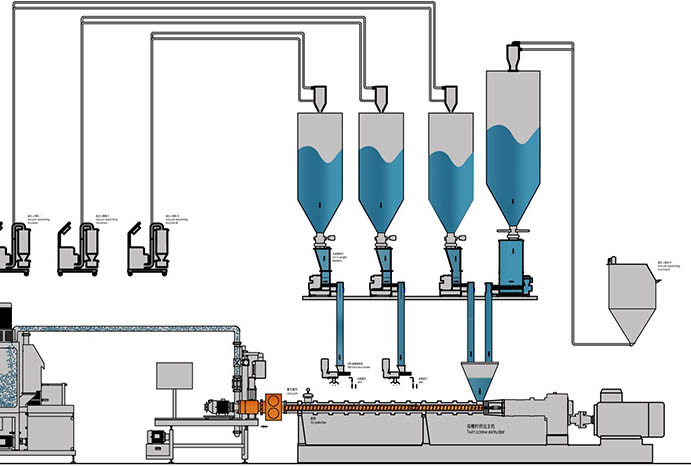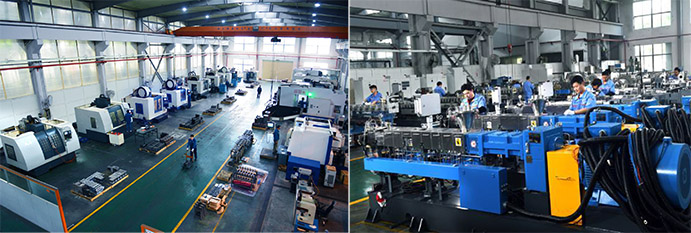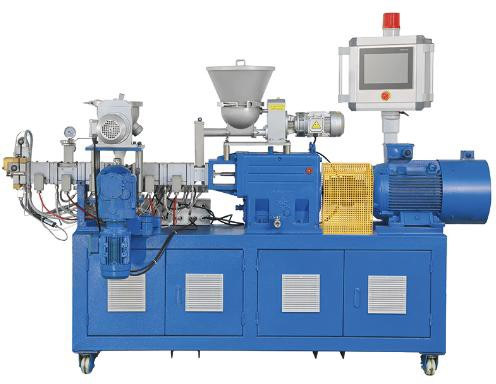Color masterbatch production involves strict requirements and utilizes both dry and wet processes, with ongoing advancements in technology.
The wet process includes grinding, phase transformation, water washing, drying, and pelletization. Technical tests during pigment grinding assess parameters like slurry fineness, dispersibility, and solid content. Four methods are commonly employed: ink method, washing method, kneading method, and metal soap method.
Ingredients → Mixing → Grinding → Mixing and extruder Compounding → Extrusion and Pelletization → color masterbatch
Pigment + Water + Dispersant → Grinding → Evaporation, Concentration, Drying → Mixing and extruder Compounding → Extrusion and Pelletization → color masterbatch
Pigment + Carrier Resin → Kneading → Extrusion and Pelletization → color masterbatch
Pigment + Dispersant → Grinding → Mixing and extruder Compounding → Extrusion and Pelletization → color masterbatch
For high-grade color masterbatches, pre-dispersed pigments are prepared and dry processes are employed for pelletization. Production conditions vary based on product requirements. Commonly, a high-speed plastic mixer machine and twin screw extruder are used. Some companies grind carrier resin into powder to enhance pigment dispersion. Single-screw or twin-screw mixing machines are also used for high-quality extrusion color masterbatch production. Color matching and measurement technologies, including high-performance spectrophotometers, are widely adopted. color masterbatches cater to plastics, rubber, and synthetic fibers, evolving from universal to specialized applications. The industry is witnessing trends of diversification, specialization, functionality, high pigment content, and advanced technology.
In the field of color masterbatches, KYmach has already delivered 3000 sets of extruders. By choosing us, we can provide you with support in factory construction, details on raw materials, production stability, and worry-free after-sales service.
(1) Automatic process: loss-in-weight feeding system;
(2) Semi-automatic process: Mixer+screw loader→twin screw extruder feeding hopper.

(1) Pay attention to the Twin Extruder machine 's L/D, considering variations in pigment addition.
(2) The selection of screw combinations is crucial for producing high-quality granules.
(3) Ensure proper configuration and alignment of the flow channels in the die-head. Further details await your inquiry.

(1)The design concept of KY-lab extruder follows a plug-and-play mode, utilizing an integrated approach where all systems are installed in the base of the mainframe extruder. It can be put into operation as soon as the power and water are well-prepared.

(2) HK MT, the fourth generation advantages of twin screw extruder in China:
Independently developed high-torque gearbox with a torque coefficient of 12.5 Nm/cm³;
New designed screw elements and screw shaft to satisfy better compounding and wear-resistance;
Rigorous extruder equipment ELP comprehensive linkage tests before delivery to ensure the highest product quality for users.
The control system enables intelligent interconnection between office and extruder machines through the K-Cloud intelligent control system.
We will tailor personalized solutions of extruder machines line based on your needs. We look forward to your contact.
 Tel: +86-25-52706155
Tel: +86-25-52706155
 E-mail: info@kymach.com
E-mail: info@kymach.com
 No.59 West Tianyuan Road, Jiangning, Nanjing, Jiangsu Province, China
No.59 West Tianyuan Road, Jiangning, Nanjing, Jiangsu Province, China